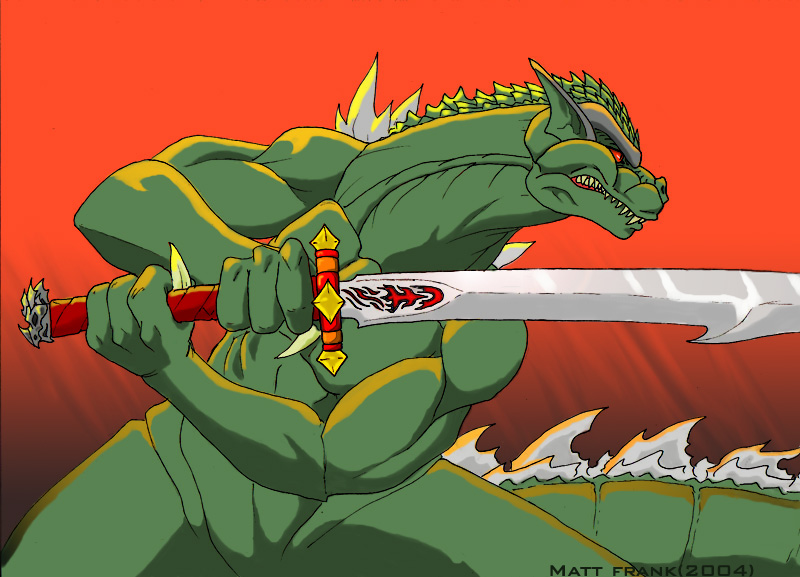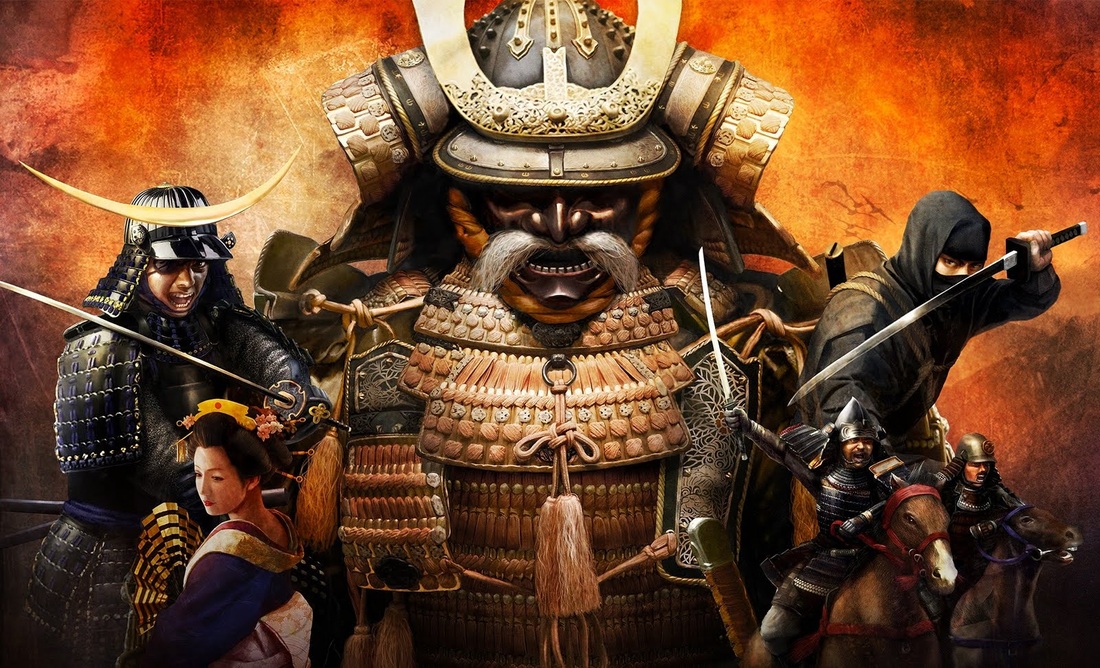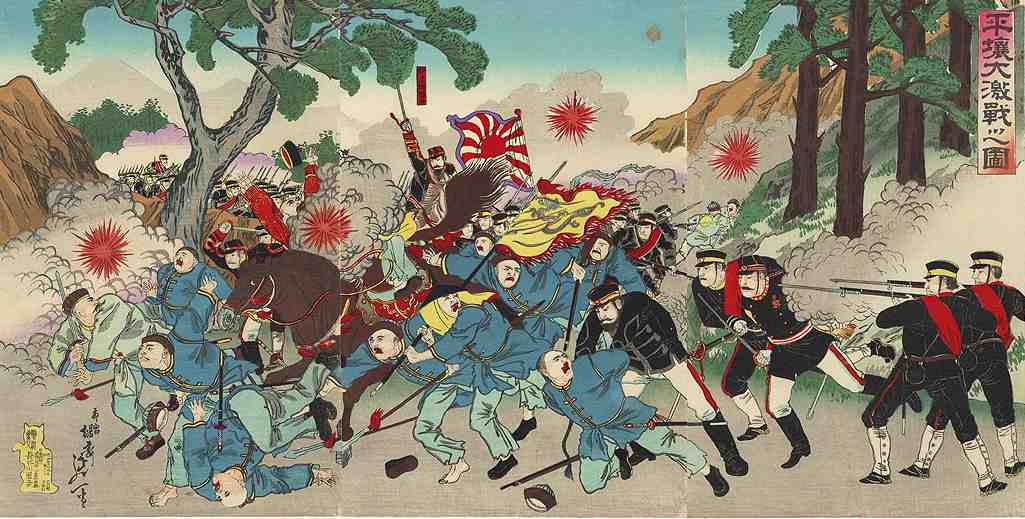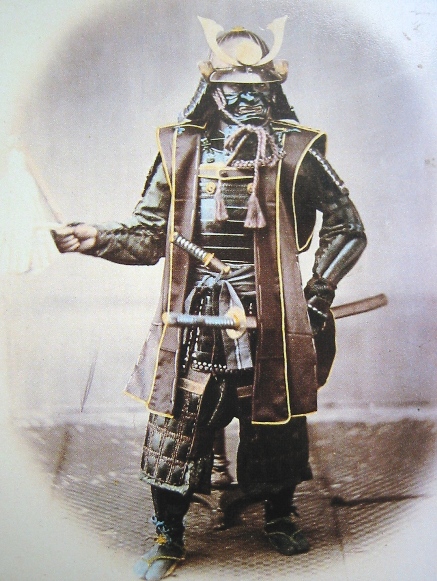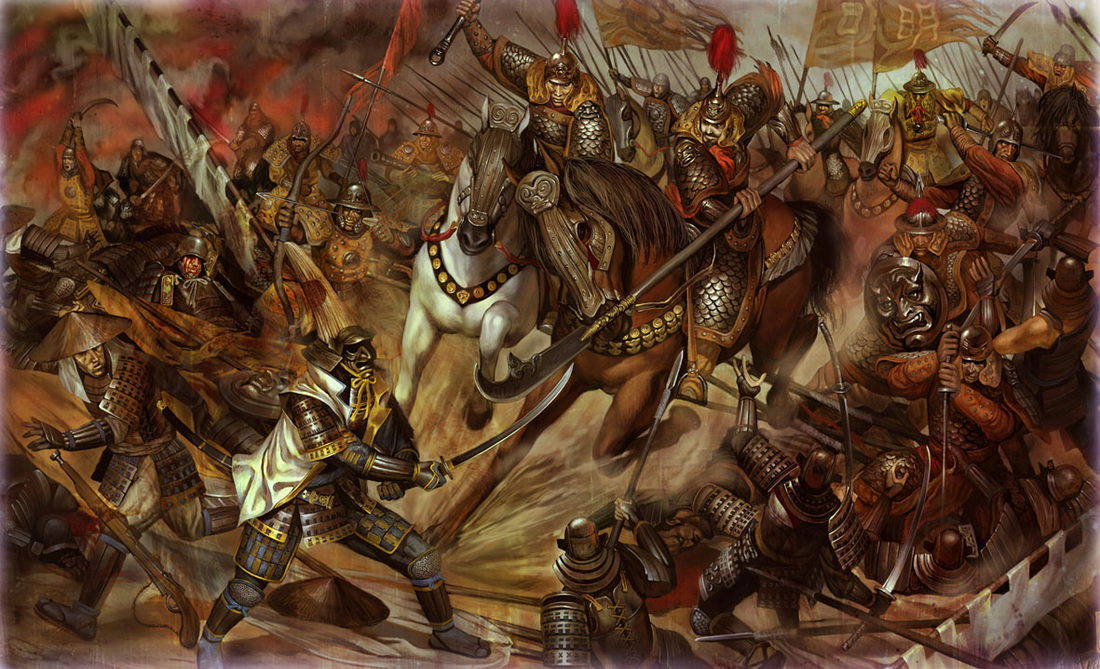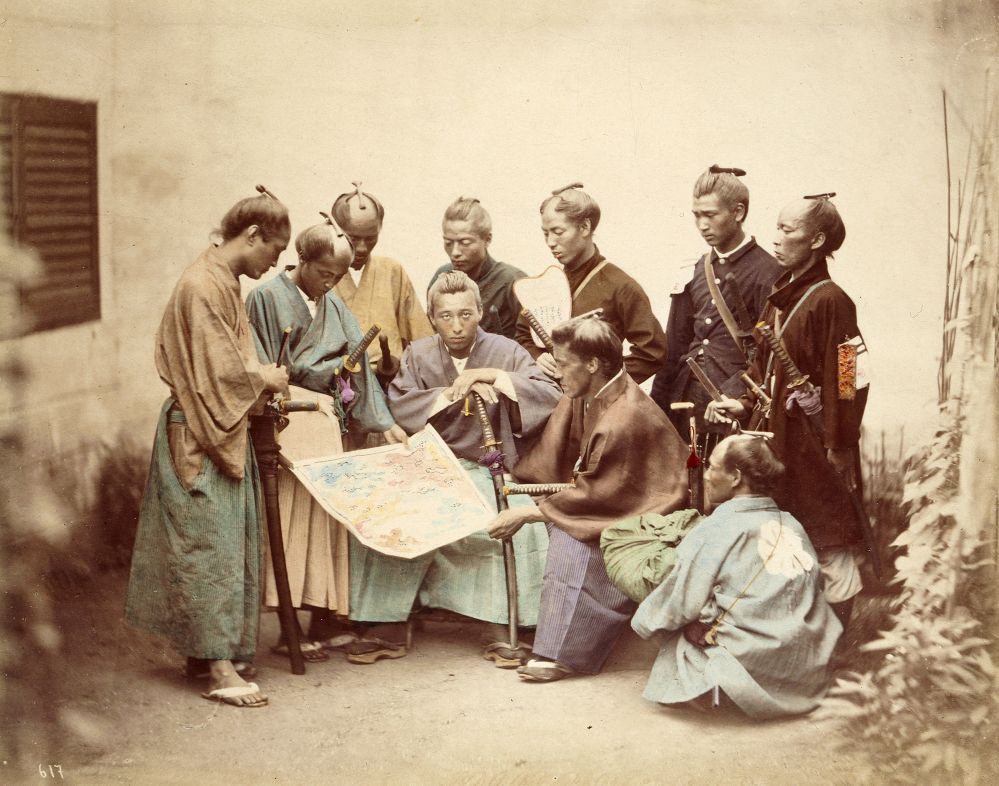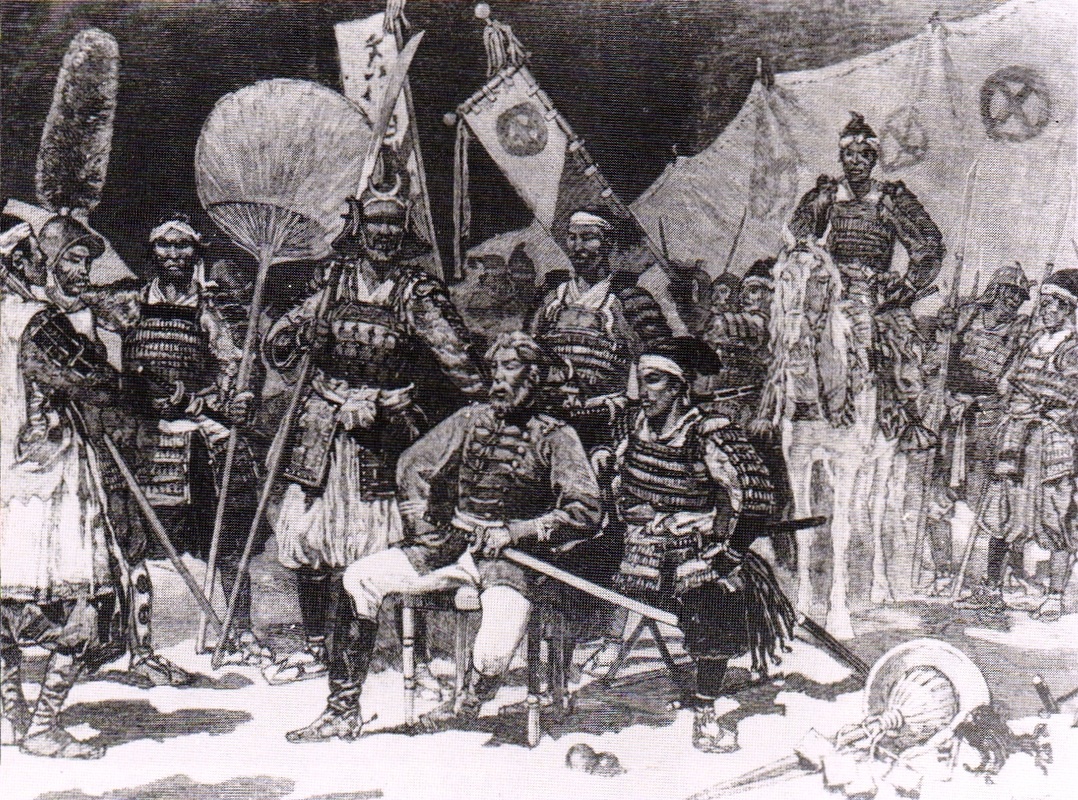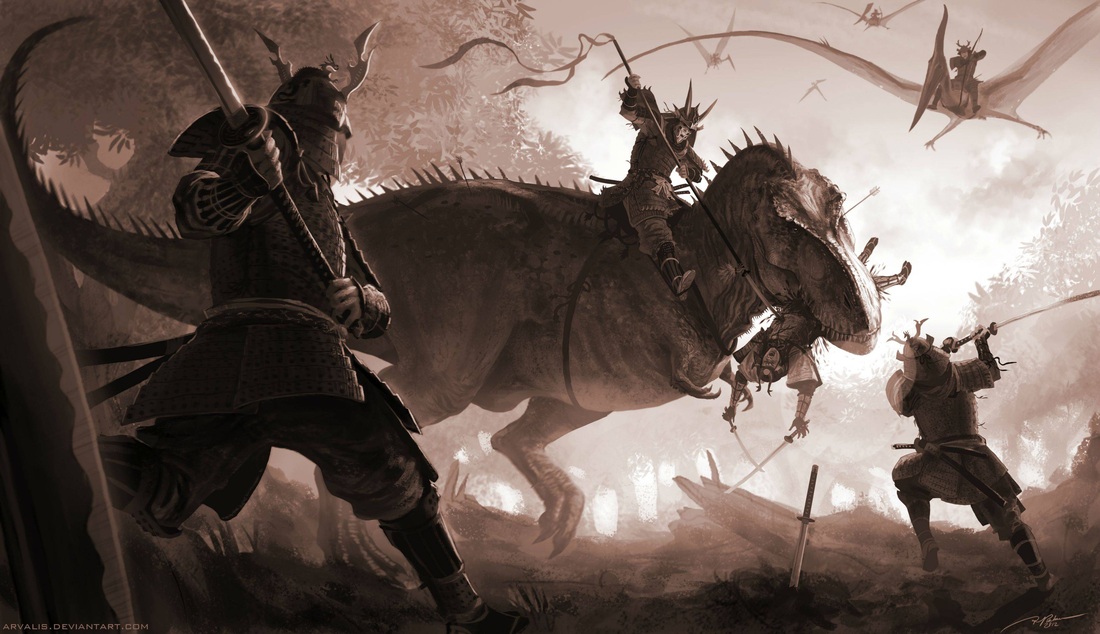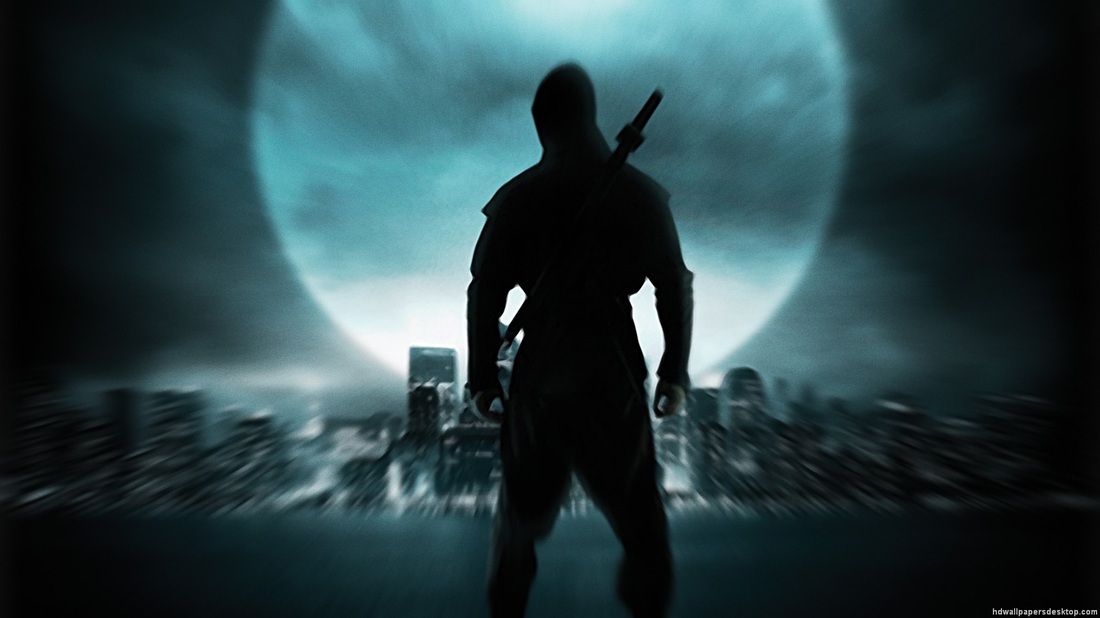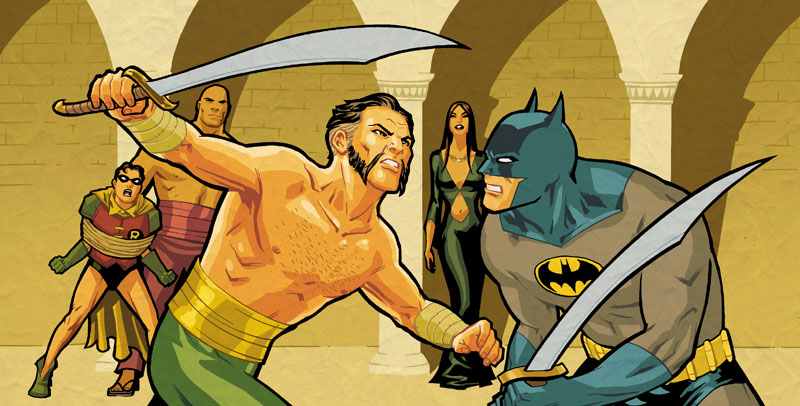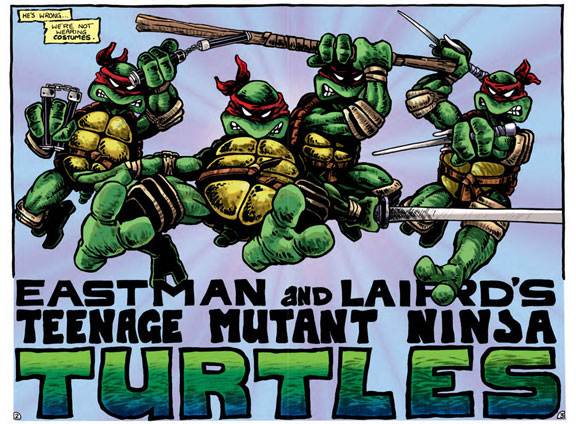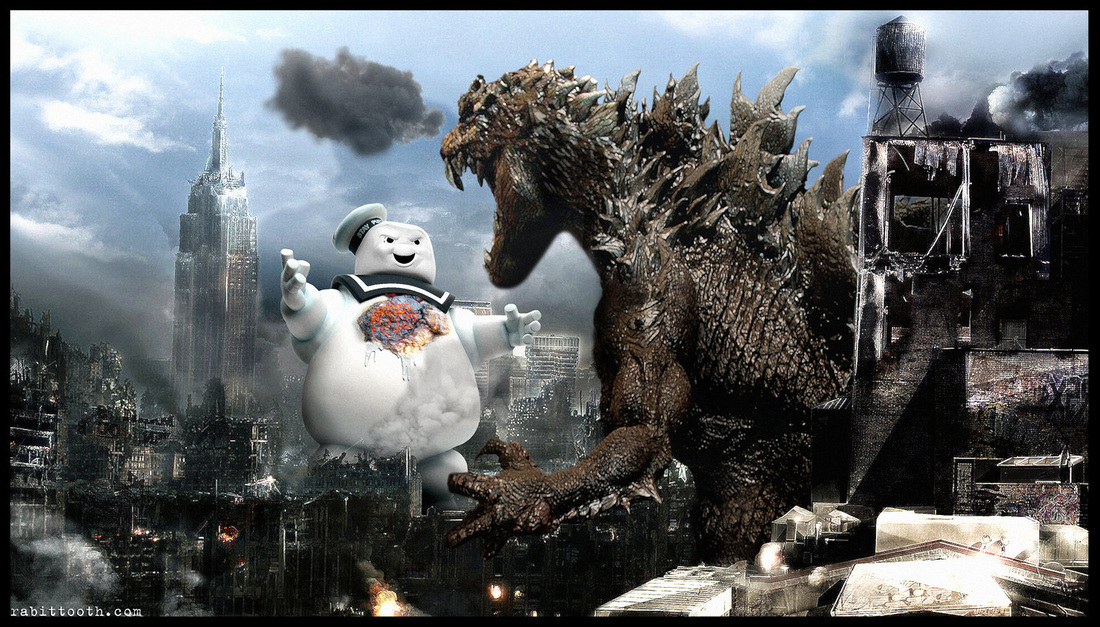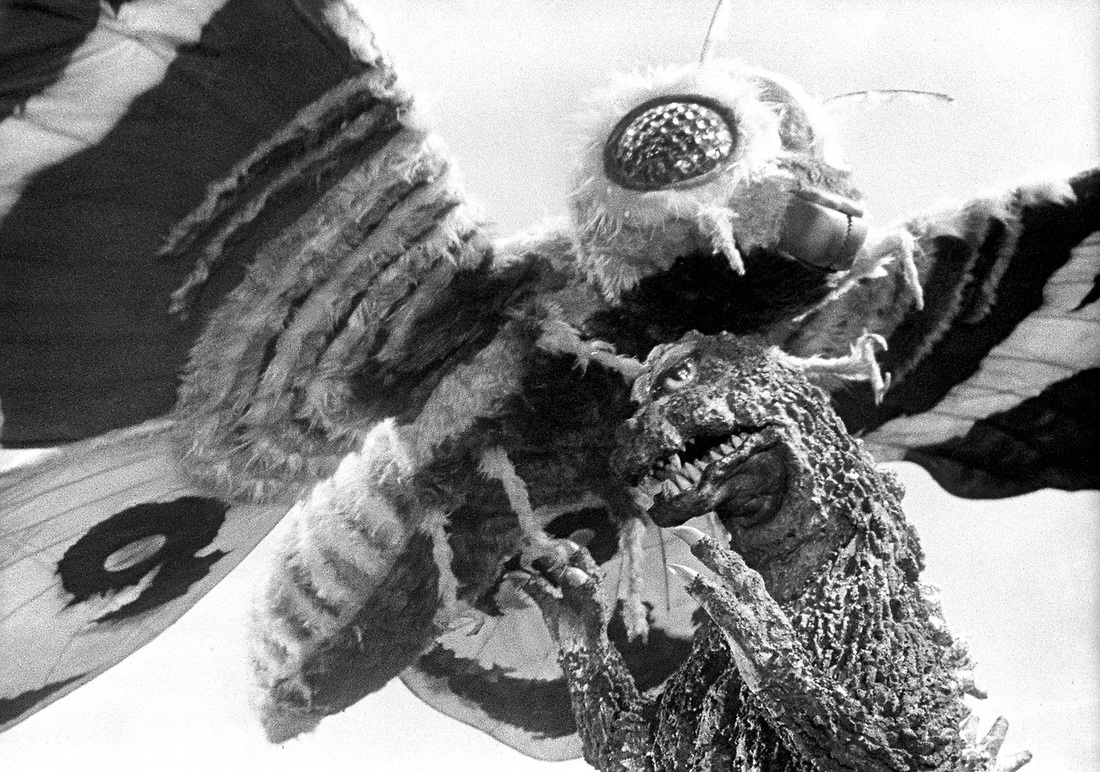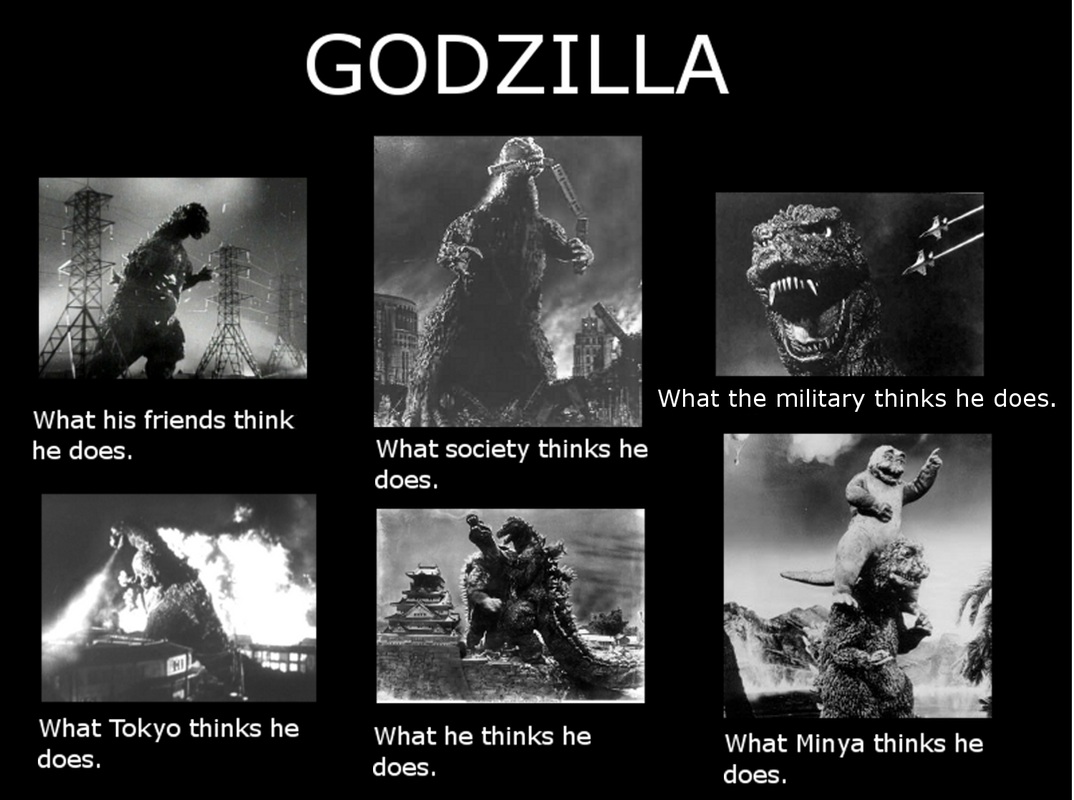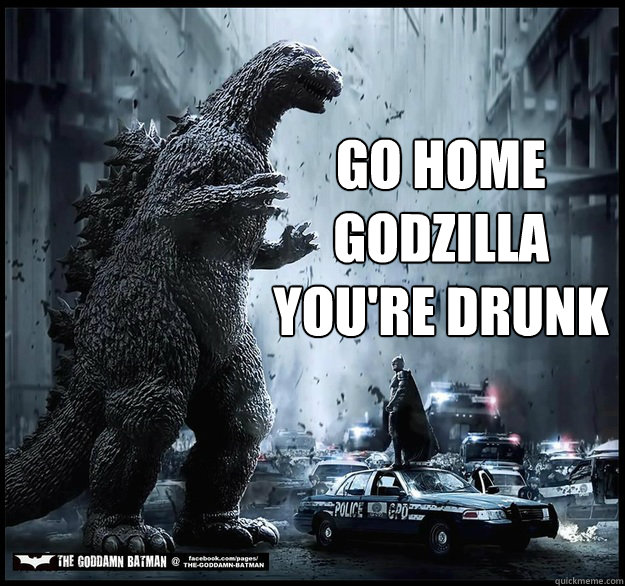Scramblin' thru... Japan Goes Western
In a Time Before Godzilla...
|
Ever get that feeling that someone doesn't want you there? Well, that same "walk in and the record skips on the juke box" moment summarizes Japan's inherent mistrust of Westerners.
Japan's Tokugawa (or Edo) period, which lasted from 1603-1867 BG (or "Before Godzilla"), was the final era of the "old school" Japanese government, culture, and society before the Meiji Restoration of 1868 toppled the long-reigning Tokugawa shōgun and propelled the country into the modern era. (Shoguns were the military governors of Japan from 1192-1867 and while Japan had emperors at the same time, the shōgun served as the de facto ruler.) Suspicious of foreign intervention and colonialism, the Tokugawa regime acted to exclude missionaries and eventually issued a complete ban on Christianity in Japan. Near the beginning of the Tokugawa period, there were an estimated 300,000 Christians in Japan; after the shogunate's brutal repression of a Christian rebellion on the Shimabara Peninsula in 1637-38 (in which 27,000 Catholic peasants died), Christianity was forced underground. The dominant faith of the Tokugawa period was Confucianism, a relatively conservative religion with a strong emphasis on loyalty and duty. In its efforts to close Japan off from damaging foreign influence, the Tokugawa shogunate also prohibited trade with Western nations and prevented Japanese merchants from trading abroad. With the Act of Seclusion in 1636, Japan was effectively cut off from Western nations for the next 200 years (with the exception of a small Dutch outpost in Nagasaki Harbor). At the same time, it maintained close relations with Korea and China, confirming a traditional East Asian political order with China at the center... for now. Japan's freedom from Western imperialism ended on July 8, 1853, when U.S. Navy Commodore Matthew C. Perry entered Tokyo's harbor with a squadron of warships. The Japanese told him to sail to Nagasaki, but Perry refused. He had a letter from President Millard Fillmore that he needed to give to the emperor. The letter, more or less, suggested that Japan accept trade with the West... or else! After witnessing how China was forced open by the British and other Western powers, and with Perry's "nudging" (he fired off his ships' cannons 13 times), Japan decided it was time to modernize... and "westernize". These events made Japanese authorities aware that the country was lacking technologically and needed the strength of industrialism in order to keep their power. This realization led to a civil war and political reform known the Meiji Restoration (1868-1912). Emperor Meiji presided over this rapid change in the newly proclaimed Empire of Japan. The nation quickly evolved from a feudal state to a capitalist and imperial world power. Emperor Meiji consolidated his power by crushing the ruling Shogun (Japan's feudal ruler) and introducing westernized forms of education, dress, military training, administration, and technology. Being an island nation, Japan had limited natural resources of its own and sought both overseas markets and raw materials. This fueled a drive for conquest, which began with the defeat of China in the First Sino-Japanese War (1894-1895) and continued when Japan shocked the Russian Empire in the Russo-Japanese War (1904-1905). To the Western powers, the Japanese victory over Russia demonstrated the emergence of a new Asian regional power in Japan. In 1914, Japan entered World War I on the side of the Allies. While never sending a single soldier to the Western Front, they used this war to seize Germany's colonial possessions in Asia. Tensions with China resulted in the Second Sino-Japanese War (1937-1945). It was during this conflict that the horrific "Rape of Nanking" occurred. For six weeks after the Japanese captured the Chinese capital of Nanking, over 300,000 Chinese civilians were murdered by Japanese soldiers. Widespread rape and looting also occurred. Japan soon turned toward an aggressive bid for total domination over all of Asia. Linking up with Nazi Germany's Adolf Hitler, Japan quickly conquered numerous islands throughout the Pacific during World War II. An attack on Pearl Harbor in Hawaii on December 7, 1941 prompted the U.S. to enter the conflict. This ultimately led to Japan's defeat and the loss of all of its overseas territories. Since adopting its revised constitution in 1947, Japan has maintained a constitutional monarchy with an emperor and an elected bicameral legislature. A member of the United Nations, Japan (which is roughly the size of the state of California) has the world's 10th largest population (over 126 million people) and the third largest economy. (The U.S. is #1 and China is #2.) And to think it all started with a pushy dude and some boats... 
Here is Japan's capital city of Tokyo at night. Tokyo, which has over 37 million people, is the most populous metropolitan city in the world. (Seoul in South Korea is #2 with over 26 million, Mexico City is #3 with over 22.5 million, and New York City is #4 with 21 million.) [Click picture for a larger version.]
|
|
|
If this were The Family Feud and the category was "Top 10 Things You Think of When You Think of Japan", without a doubt, "samurai" would be one of the answers... along with Godzilla, ninjas, Nintendo, Hondas, math, The Ring, anime, Hello Kitty, and atomic bombs.
The word samurai means "to serve", and they were the military nobility of medieval and early-modern Japan. Referred to as bushi in Japanese, the samurai followed a strict set of rules that came to be known as Bushidō, which literally means "military scholar road", somewhat similar to the idea of chivalry by knights of the Middle Ages. The samurai can trace their history back to Emperor Monmu, who drafted one out of three Japanese males into military service during his reign (697-707 AD). Although this was one of the first attempts by the government to form an organized army, it was short-lived. After the undisciplined and unorganized armies of Emperor Kammu (ruled 781-806 AD) were destroyed in battle subduing the rebellious Emishi people (sort of like Japanese "Native Americans"), he introduced the title of "Shōgun" and began relying on the soldiers of regional clans to beat the Emishi. (Though this is the first known use of the "Shōgun" title, it was temporary and did not hold any political power until the 12th Century.) Skilled in mounted combat and archery, these clan warriors became the emperor's preferred tool for putting down rebellions. Like the Native American tribes in North America and the clans in Scotland, the Japanese clans warred with each other. Frequent clan wars eliminated the "weak" clans, and by the Heian period (794-1185), the stronger clans were wearing armor and laying the foundations for Bushidō. After the Genpei War (1180-1185), which was a massive clan war, a clan leader named Minamoto no Yoritomo founded the first Shogunate of Japan. From 1192-1867, shōguns served as the de facto rulers of the country. Yoritomo organized soldiers and a police force whose responsibility was limited to arresting rebels and collecting army supplies. In time, however, their responsibilities grew, and soon a samurai-class appeared. With their amassed manpower, resources, and political backing, the samurai establish the first samurai-dominated government where the samurai served the shōguns. Zen Buddhism spread among the samurai in the 13th Century and helped shape their standards of conduct, particularly overcoming a fear of death and killing. Wisdom and serenity helped "balance" their violent existence. It also further enhanced Bushidō by justifying death on the field of battle. In other words, war was purifying... and death was a duty. If a samurai failed to uphold this "duty", he could only regain it by performing seppuku, a form of ritual suicide. (He could also use seppuku as a way to avoid surrendering, being captured, or if he was mortally wounded.) The ceremonial disembowelment (which means your guts spill out) was usually part of a more elaborate ritual and performed in front of spectators (although it could be done quickly on a battlefield if time was, you know, "of the essence"). It involved of plunging a short blade, traditionally a tantō, into the abdomen and moving it from left to right in a slicing motion. The cutting of the abdomen released the samurai's spirit in the most dramatic fashion, and it was an extremely painful way to die. Sometimes the samurai who was performing seppuku (which literally means "stomach-cutting") asked a loyal comrade to cut off his head at the moment of agony. (Personally, I'd start with the head-chopping-off part, and, if there's time, do the whole jamming-a-knife-into-my-tummy portion later...) To samurai, a "good death" was its own reward since dying honorably still didn't guarantee them any "future rewards" in the afterlife. (Really? No guarantee? So I try every single day to die in battle... and if I can't get that to happen, I cut open my stomach... and that doesn't automatically get me a reserved table in the "Great Restaurant in the Sky"? Seems like a bum deal to me. You at least get a pair of Nikes in other cults...) In 1274 and 1281, the samurai were called upon to protect Japan from invading Mongol forces. Severe thunderstorms during the Mongol's 1274 boat invasion were followed up by a typhoon when they tried again in 1281. And despite the Mongol's use of small bombs (which was likely the first appearance of gunpowder in Japan), the storms helped the samurai defenders repel the Mongol invaders even though they were greatly outnumbered. These winds became known as kami-no-kaze, which literally translates to "wind of the gods". (This is often given a simplified translation of "divine wind", or kamikaze. Of course, the term "kamikaze" is most often associated with Japanese pilots that intentionally crashed their planes into Allied ships in the Pacific Ocean during World War II.) Nevertheless, the kami-no-kaze lent credence to the Japanese belief that their lands were divine and under supernatural protection. In the 14th Century, Gorō Nyūdō Masamune, a blacksmith, developed a two-layer structure of soft and hard steel for use in swords. This improved the cutting power and endurance of the Japanese sword (called a katana) that was adopted by the samurai. (The katana is also called the "samurai sword".) However, when the "Westernization" of Japan began during the Meiji Restoration (1868-1912), the samurai found themselves fighting the rapid changes occurring throughout society. Emperor Meiji abolished the samurai's right to be the only armed force in favor of a more modern, western-style, conscripted army in 1873. The samurai class was merged with other "warrior families" to form a new (downgraded) class, called the Shizoku. To add insult to injury, they also loss their right to carry a katana in public and no longer had the right to execute commoners who disrespected them. (Wait. That last one was an actual RIGHT they had? Man, what kind of slick samurai union rep did they have to get that clause approved originally?!) It now appeared that the samurai were being disrespected by the very government they had protected for hundreds of years. And if anyone takes disrespect well, it's a group of warriors who, at one point in time, could kill a man for looking sideways at him. (Seriously, I can't get past the fact that they could just up and kill a dude in public for being a dick. Can you imagine a samurai in line at Wendy's? Or the post office? Or the BMV?!) Led by Saigō Takamori, who was dubbed "the last true samurai", the samurai revolted against the new Imperial Government from January to September in 1877. Takamori had been a high-ranking samurai member of the new Meiji government, and he had even supported some of the early reforms. However, he grew concerned over political corruption and the downgrading of the samurai position. Changes to Japanese culture, language, dress, and society appeared to many samurai to be a betrayal of the jōi (or "expel the barbarian") principal followed in Japan since the Act of Seclusion in 1636 kicked all foreigners out. A big-time advocate of war with Korea (because, Boo Korea, right?), when Takamori's plan for war was rejected by Emperor Meiji in 1873, he resigned from all of his government positions and returned to his hometown of Kagoshima. Many other ex-samurai in the military joined his cause. To support these men (and to give them something to do), Saigō established a private military academy in Kagoshima in 1874. Word of Saigō’s "academy" was greeted with concern in Tokyo. The idea that samurai might be led in rebellion by the famous and popular Saigō was alarming. In December 1876, the Meiji government sent a police officer named Nakahara Hisao and 57 other men to investigate. The men were captured, and under torture, confessed that they were spies sent to assassinate Saigō. Although Nakahara denied this confession, it was widely believed by the samurai that a rebellion was needed to protect Saigō. Fearing such an insurrection, the Meiji government sent a warship to Kagoshima to remove the weapons stockpiled there on January 30, 1877. Ironically, this provoked open conflict, and the Satsuma Rebellion began. (It was called "Satsuma" after the Satsuma clan, which was the dominant clan of the time and the one based out of Saigō's home city Kagoshima.) Despite facing overwhelming odds and the modernized Imperial Japanese Army, the samurai held out until their final defeat at the Battle of Shiroyama on September 24, 1877. Outnumbered 60:1, the samurai charged the lines of the Imperial Army at day break. The non-armor-wearing troops had not been trained for close-quarter sword fighting. (They had the whole "poke-poke" with the bayonets, but good luck against a pissed-off samurai wielding a katana...) In just a few minutes, the once organized line fell into chaos. Highly skilled samurai swordsmanship prevailed against an army with very little traditional training. For a short time, Saigō's 500 samurai held ground against the 30,000 Imperial troops. But, by 6:00am, only 40 samurai were still alive... and Saigō had been wounded in the stomach and the femoral artery (in the thigh). Losing blood rapidly, he asked to find a suitable spot to die. One of Saigō's loyal followers carried him on his shoulders and aided Saigō in committing seppuku before he could be captured. All 500 samurai were eventually killed (or took their own lives) at this battle. The Imperial Army suffered 10,500 KIA. (The 2003 movie The Last Samurai, starring Tom Cruise and Ken Watanabe, is loosely based on the Satsuma Rebellion and several of the key combatants.) Financially, crushing the Satsuma Rebellion cost the government greatly, forcing Japan off the gold standard and causing the government to print paper currency. Because the new Imperial Japanese Army, built from men drafted into service (without regard to social class), had proven itself in battle, the rebellion effectively ended the samurai class. In 1889, Saigō Takamori was labeled as a tragic hero, and Emperor Meiji pardoned him posthumously. After Japan lost World War II, the Shizoku (the ex-samurai class) disappeared under the 1947 Japanese Constitution. While the samurai constituted less than 10% of the population, their impact can still be found in everyday life and in martial arts. 
Back in the days when "Saturday Night Live" was funny, there was a recurring samurai character played by John Belushi, which put the ancient Japanese warrior in obscure situations... like owning a delicatessen. [Click the picture to watch this classic sketch. Pay attention to his reaction when he messes up the order!]
|

The TV network Spike ran a series called "Deadliest Warrior" in which they pitted some of history's greatest fighters against each other in one-on-one combat. The show went into crazy statistics and simulated the fights with computers 1,000 times. Narrated by the voice of the one-eyed Spartan in the movie "300", it made for some great TV. [Click the picture to watch the episode: Viking vs. Samurai.]
|

The first TMNT movie came out on Match 30, 1990. It cost $13.5 million to make... and it grossed $202 million. The TMNT "reboot" came out August 8, 2014. It cost $125 million... and it grossed $350 million. Taking inflation into account, $202 million in 1990 is actually $365 million in 2014 dollars. [Click picture for a larger version.]
|
What comes to mind when you hear the word "ninja"? Secret assassins dressed all in black? A phenomenal chopping tool for the kitchen? Mutated turtles named after Renaissance artists?
A ninja (or shinobi in Japanese) was a covert agent or mercenary in feudal Japan. Ninjas were involved in espionage (spying), sabotage, and assassinations. Their covert methods of waging war contrasted them with the samurai, who observed strict rules about honor and combat. Historians disagree about how far back into Japanese history the ninja can be traced. Most agree they were used frequently to carry out "hits" during the Sengoku period (1467-1573), otherwise known as the "Warring States", when social upheaval, political assassinations, and near-constant warfare ripped the country apart. (Seems like a ninja's paradise!) Others place ninjas as far back as the 12th Century. Whenever their origin, ninjas faded into obscurity after the Warring States period ended with the country's unification under the shōguns of the Tokugawa period. By the time of the Meiji Restoration, the tradition of the ninja had become a topic of popular imagination and shrouded in mystery in Japan. Ninjas appeared often in folklore and legends, which is why it is difficult to separate historical fact from myth. As a result, the perception of ninjas in the U.S. is often based more on legends than on the actual historical spies of the Warring States. Nevertheless, ninjas were stealth soldiers and mercenaries hired mostly by daimyos. (Daimyos were powerful territorial lords in pre-modern Japan who ruled most of the country from their huge estates. Daimyos also hired out samurai.) Espionage was the chief role of the ninja. With the aid of disguises, the ninja gathered information on enemy terrain and fortifications, as well as obtaining passwords and communiques. Arson was the primary form of sabotage practiced by the ninja, who targeted castles and camps. Deaths of famous leaders have sometimes been attributed to ninja assassination, but the secretive natures of these scenarios have been difficult to prove. The skills required of the ninja has come to be known in modern times as ninjutsu. Like the samurai, ninja were born into the profession, where traditions were kept in, and passed down through the family. The ninja was trained from childhood, as was also common in samurai families. Outside the expected martial art disciplines, a youth studied survival and scouting techniques, as well as information regarding poisons and explosives. Physical training was also important, which involved long distance runs, climbing, and stealth methods of walking and swimming. (Yea, heads up on the stealth walkers...) The ninja did not always work alone. For example, in order to scale a wall, a group of ninjas may carry each other on their backs or provide a human platform to assist an individual in reaching greater heights. The use of disguises is common and well-documented. Disguises came in the form of priests, entertainers, fortune tellers, merchants, and monks. (Nothing like getting jumped by a dude dressed as a monk...) While the image of a ninja clad in black clothes is prevalent in popular media, there is no written evidence for such a costume. Instead, it was much more common for the ninja to be disguised as a civilian. The notion of black clothing is likely rooted in early drawings of ninjas that showed them dressed in black in order to portray a sense of invisibility. Ninjas used a large variety of tools and weapons. While shorter swords and daggers were used, the katana was the ninja's weapon of choice. In addition, ninjas used darts, spikes, knives, throwing-stars, hand claws, bows, chain and sickle, gardening tools, small grenades, poison, blowguns, firearms, and the happō (a small eggshell filled with blinding powder to facilitate an escape). If you could kill with it, the ninjas knew how to use it. Comic books and superheroes often reference ninjas. Such examples include Spider-Man's foe White Ninja, X-Men supporting character Yukio, Ghost Rider's foes Deathwatch and Death Ninja, and Wolverine's mentor Ogun. The stealth and martial arts training of the recent Batman movies has many Batman fans assuming Batman is a ninja, especially after Ra's Al Ghul specifically mentions "ninja" during his training of Bruce Wayne. The G.I. Joe comic books had many story arcs that revolved around Scarlett, Snake Eyes, Storm Shadow, Jinx, Kamakura, Firefly, and the Arashikage ninja clan. Lego's Ninjago: Masters of Spinjitzu proved a marketing success and spawned toys, shows, video games, and movies. But, the most famous comic book ninjas are, without a doubt, the Teenage Mutant Ninja Turtles. In the Teenage Mutant Ninja Turtles (TMNT) series, all four main characters and many of their friends and enemies are ninjas. For those that need a refresher, the Teenage Mutant Ninja Turtles are a fictional team of four teenage turtles, named after four Renaissance artists, who were trained by their rat sensei in the art of ninjutsu. (I know, I know... keep reading...) From their home in the sewers of New York City, they eat pizza and battle criminals, evil overlords, mutated animals, and alien invaders... all while attempting to remain isolated from society. Leonardo (blue mask, katana) is the leader, Donatello (purple mask; bō staff) is the brains, Raphael (red mask, pair of sai) is the hot-head rebel, and Michelangelo (orange mask; pair of nunchaku) is the goof-ball that coined the phrase "Cowabunga!" "Master" Splinter is the Turtles' adoptive father and sensei. He is a Japanese mutant rat who learned the ways of ninjutsu from his owner and master, Hamato Yoshi. (In some versions, Splinter is Hamato Yoshi... just in mutated humanoid rat form... instead and not just Yoshi's pet.) Shredder, the archenemy of Splinter and the Turtles, is the leader of the Foot Clan, which originated in feudal Japan, teaches its followers ninjutsu and black magic, and runs an organized crime ring. The TMNT franchise, which launched with a comic book by Kevin Eastman and Peter Laird in May 1984, achieved massive popularity in the 1980s and early 1990s, resulting in five movies, four animated series, a live action series, more than 40 video games, and a wide range of toys and other merchandise. So whether the West made ninjas "cooler" than they really were, it goes without saying that they were an elite fighting force. Of course, it begs the question... who would win in a battle between ninjas and samurais? (Sounds like a quality doctoral thesis to me...) |
|
|
|
|
Godzilla.
Even the name implies this is not a dude you want to mess with. Godzilla (or Gojira in Japanese) is one of the most iconic symbols of Japanese "pop" culture worldwide. (Piss off, Hello Kitty...) Godzilla is a giant monster whose name is made up of the Japanese words gorira ("gorilla") and kujira ("whale"), which came from initial plans to create a monster that was "a cross between a gorilla and a whale", alluding to his massive size, power, and aquatic origin. (He's the original chicken of the sea...) He first appeared in Ishirō Honda's film Godzilla, which opened on November 3, 1954. Since then, Godzilla has gone on to star in 28 Japanese movies and two American reboots. With the nuclear bombings of Hiroshima and Nagasaki (both in 1945) and the Lucky Dragon 5 incident (in which a Japanese tuna fishing boat, with a crew of 23 men, were exposed to nuclear fallout from the U.S. thermonuclear test on Bikini Atoll in the Pacific on March 1, 1954) still fresh in the minds of the Japanese public, Godzilla was conceived as a filmographic metaphor for the United States, as well as an allegory of nuclear weapons in general. The earlier Godzilla films, especially the original, portrayed Godzilla as a frightening, nuclear monster. Godzilla represented the fears that many Japanese held about the nuclear attacks during World War II, and the possibility it would happen again. (After all, the U.S. had contemplated using atomic weapons during the Korean War in the 1950s.) Audiences respond positively to the character because he acted out of rage and self-preservation and the film showed where science and technology could go wrong. As the film series expanded, some stories took on less serious undertones and portrayed Godzilla as a hero... others showed him as a destructive monster... while some made Godzilla the lesser of two evils forced into being the defender by default (but remained a danger to humanity, namely the poor souls living in Tokyo). Godzilla's iconic character design was conceived as that of an amphibious reptilian monster based around the loose concept of a dinosaur with an upright standing posture, scaly skin, muscular arms, spikes on its back and tail, and a furrowed brow. (The dude always looks constipated.) The creators combined parts of a Tyrannosaurus Rex, an Iguanodon, a Stegosaurus, and an alligator to form Godzilla. To emphasize the monster's relationship with the atomic bomb, his skin texture was inspired by the keloid scars seen on Hiroshima's survivors. Godzilla's appearance has traditionally been portrayed in the films by an actor wearing a latex costume, though the character has also been rendered in animatronic, stop-motion, and computer-generated form. Godzilla has a distinctive roar, which was created by rubbing a resin coated glove along the strings of a bass and then slowing down the playback. Godzilla is sometimes depicted as green in comics, cartoons, and movie posters, but the costumes used in the movies were usually painted charcoal grey with bone-white dorsal fins. Within the context of the Japanese films, Godzilla's exact origins vary, but he is generally depicted as an enormous, violent, prehistoric sea monster awakened and empowered by nuclear radiation. His size is inconsistent, changing from film to film (and even from scene to scene). In the original 1954 film, Godzilla was scaled to be 164 feet tall. This was done so Godzilla could just peer over the largest buildings in Tokyo at the time. As the series progressed, Godzilla got as tall as 328 feet. In the 2014 American film Godzilla, he hit his tallest at 350 feet. (Thank you America PEDs!) On average, Godzilla weighs between 20,000 and 60,000 tons. (It just depends if he's in his "bulking stage"...) Godzilla's signature weapon is its "atomic breath", a nuclear blast that he generates inside of his body and unleashes from his jaws in the form of a blue or red radioactive heat ray. Godzilla is shown to possess immense physical strength and muscularity. (No wimpy T-Rex arms here!) He is immune to conventional weaponry thanks to his rugged hide and ability to regenerate. Of course, as a result of surviving a nuclear blast, Godzilla cannot be destroyed by anything less powerful. (So, sack up and bust out the big guns!) Other movies, TV shows, comics, and games have shown Godzilla with additional powers like magnetism, an electric bite, super speed, eye beams... and even flight. Godzilla's allegiance and motivations change to fit the needs of the story. Although Godzilla does not like humans, he will fight alongside humanity against common threats. However, he makes no special effort to protect human life or property and will turn against his human allies on a whim. Godzilla doesn't eat people and instead sustains himself on plants... and radiation. (What about power plants?! Get it?!) Godzilla is neither "good nor bad" and has been compared to a Shinto "God of Destruction", which lacks moral agency and cannot be held to human standards of good and evil. The gender of the Godzilla character has been a subject of confusion for English-speaking audiences. In the original Japanese films, Godzilla and all the other monsters are referred to with gender-neutral pronouns such as "it", while in the English dubbed versions, Godzilla is explicitly described as a male. (Hey, you all know you've, ahem, "looked"...) Godzilla has fought other monsters, most notably King Ghidorah (a three-headed dragon), Gigan (a space monster with a buzz saw sticking out of his abdomen), and Mechagodzilla (a robot version of Godzilla). Godzilla has rivals-turned-allies, such as Mothra (a radioactive moth), Rodan (a mutated Pterosaur), and Anguirus (an upright Ankylosaurus). Godzilla even has a child named Minilla (or Minya). Godzilla has fought other fictional characters from other franchises in crossover events, such as King Kong and the Fantastic Four. (Yea, but he never battled Batman. You can't take the crown without taking down Gotham's Dark Knight... IMO...) Godzilla remains one of the greatest fictional heroes in the history of film. How great? In 1996, the big man won the MTV Movie Lifetime Achievement Award and remains one of only three fictional characters to have accomplished that. (Jason Voorhees of Friday the 13th lore won it in 1992, and Chewbacca from Star Wars took home the golden popcorn trophy in 1997.) Godzilla was even given a star on the Hollywood Walk of Fame in 2004. Of course, what can we thank for this? The Manhattan Project. U.S.A.! U.S.A.! U.S.A.! |

In 1998, America took a "stab" at the Godzilla franchise. The movie, while a major financial success (it made $379 million on a budget of $130 million), was lambasted by critics and fans. The American "reimaging" of the Godzilla monster was so unpopular that it was given its own identity by Toho Co., Ltd., the Japanese film company that owns the Godzilla trademark. No longer called "Godzilla", this 1998 monster was re-named "Zilla" and became a separate, stand-alone monster unrelated to the Godzilla character. Zilla would go on to fight and lose against Godzilla in the 2004 film "Godzilla: Final Wars". In less than twenty seconds (the shortest monster fight in franchise history), Zilla is knocked down by Godzilla's tail... and then set on fire by his "atomic breath". Problem solved. [Click picture for a larger version.]
|



